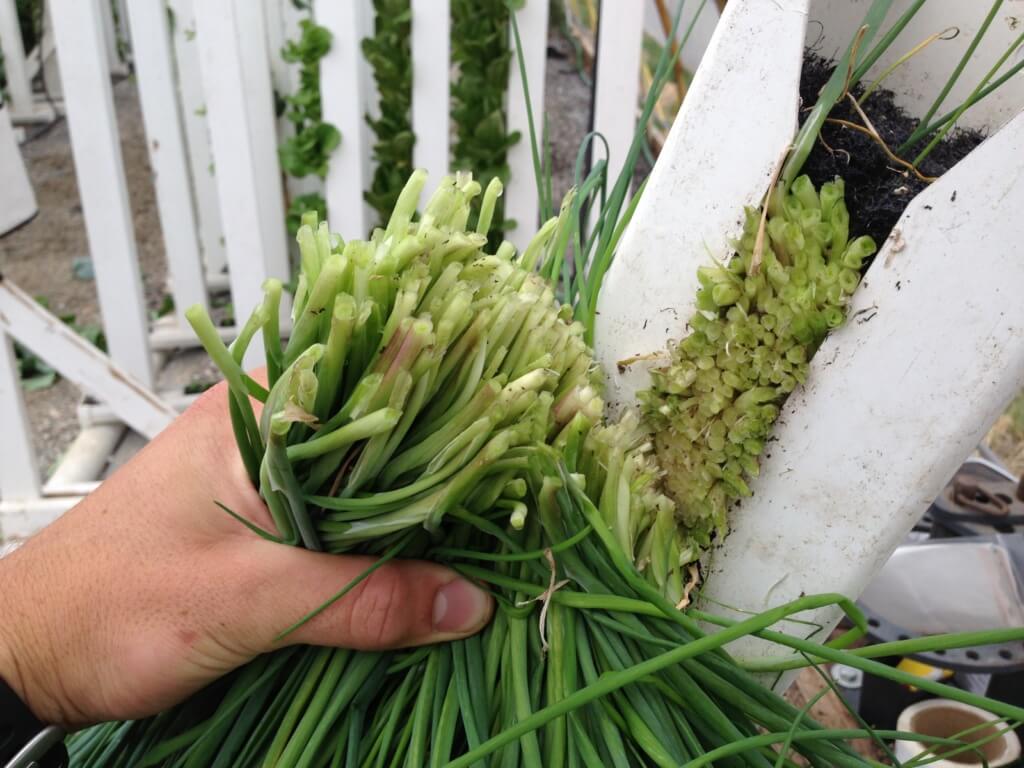Chives are an incredibly versatile herb with a mild to strong onion flavor, depending on the growing conditions and variety. The great flavor, combined with the ease with which chives propagate and thrive, make them a popular ingredient and a great crop for hydroponic farmers.
The most common type of chives is—you guessed it—common chives. A few other varieties, like garlic chives and Chinese chives, are also available.
 Ideal growing conditions for chives:
Ideal growing conditions for chives:
- pH: 6.1–6.8
- EC: 1.8–2.2
- 12+ hrs light
- Temperature: 65–80º F
Chives are a tough crop that will survive a wide range of temperatures and can even go without water for a while without it impacting quality. Chives are also fairly pest-resistant, rarely infected with diseases and are rarely targeted by insect pests.
Chives propagate quickly from root
Chives propagate rapidly from roots and can be planted by division. Growers using ZipGrow Towers can simply tear apart the roots of a plant from another Tower and use them to plant multiple others.
Rarely will growers need to use seeds to grow chive seedlings, unless mature chive plants are nowhere to be found.
If chives are grown from seed, seedlings will be ready to transplant about 4 weeks later, and ready to harvest 3–4 weeks later. When planted from root, chives will be established within 2–3 weeks and will grow thicker with every harvest. Eventually, chive plants will inhabit every inch that you let them.
Harvest chives every two to three weeks
Chives should be trimmed back to about 1–2 inches above the crown every two weeks (three at the most). This will give growers a nice harvest and will keep the chives looking lush and green.
(See how to harvest chives in this video)

Chives are very easy to harvest with a pair of shears or a harvest knife. Hold the top of the plant in one hand and (carefully) cut through the greens near the base. You’ll be left with a hand full of the tasty herb. 
Planning a farm?
If you’re a new farmer, you’re probably familiar with the question, “What next?” Learning to build, fund, and manage a farm is a big undertaking, which is why we created Upstart University. This site is dedicated to guiding new farmers on their journey with the courses they need and at the pace they need.



HI can you tell me what NPK formula you are using for your Chives
Hi,
I didn’t quite get the part on growing chives hydroponically. Can I simply have chives in a glass of water instead of soil? Maybe if I add hydroponic nutrients it would work?
thanks!
How far apart I need to plant chives in the NFT channals
Thanks Don